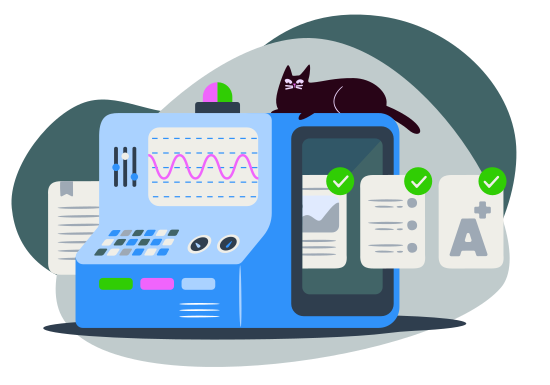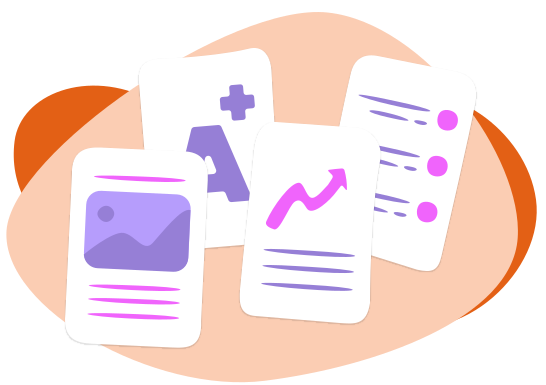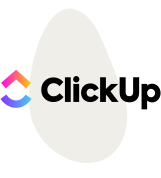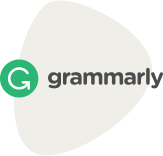The university student's guide to ethical AI use
University students often find themselves surrounded by the buzz of new technology – and artificial intelligence (AI) is no exception. With endless possibilities for its use, AI can make our lives easier and more enjoyable if used correctly. Unfortunately, unequal access to educational resources means that not everyone has an accurate understanding of responsible AI usage.
Rather than refraining from using this transformative technology altogether, it’s important to educate students on what is, or isn’t, allowed when it comes to using AI as a part of their studies. With the guidelines clear, and expectations set across the board, those in higher education will be able to utilize AI to its fullest potential.
In this informative guide, we’re going to discuss just how a student can go about using AI in an ethical, fair, and lawful manner. We’ll assess what the current EdTech environment looks like when it comes to this groundbreaking digital tool, as well as how it’s already being integrated into learning, tools that students can immediately start using, and advice on how to get the most out of AI while you study.
01
The current state of AI in higher education and beyond
While AI might be a relatively new phenomenon, some universities and other educational bodies have been quick to adopt its presence as part of their day-to-day setup. Students have also realized the potential of the tech, integrating AI tools into the way they research, revise, and even write essays.
AI higher education statistics
AI is already offering tremendous value to the education sector – and that’s definitely being reflected in the current and future estimated value of the worldwide market. In 2022, the market for AI being used in education was predicted to total a whopping $2.48 billion. In near-unprecedented predicted rates of growth, that figure is expected to rise to $53.68 billion by the end of 2032.
That’s estimated compound annual growth (CAGR) of 36% year-on-year. The fastest period of growth is predicted to be from now until 2030, where the value of the market might skyrocket by 45% every year on average.
But while those behind these innovative forms of tech might expect to profit, the educators themselves are less keen to see AI play a prominent role in the classroom. In a survey of 863 teachers, principals, and district leaders, EdWeek found that the bulk of respondents were somewhat opposed to AI. As many as 47% of those asked felt at least somewhat negative about its use. In total, the survey found the following attitudes:
16%
AI might not be immensely popular with educators, but that doesn’t totally reflect the attitudes of students. Cryptopolitan found that in the UK 68% of the students they surveyed felt that using AI had had a direct positive impact on their academic results and performance. Furthermore, of the 1,000 students they spoke to, 67% said they used AI in some capacity.
A reduced hesitancy over AI adoption was mirrored in the US, where just 26% of students surveyed by Turnitin said they thought generative tools had a negative impact on their work.
Interestingly, despite concerns and worries about AI and ethical usage, most people feel that the best solution is to educate students about how to use these tools responsibly, rather than ban or restrict their usage.
A survey of the general public by YouGov found that 52% of respondents felt that the best course of action was to teach students how to use AI responsibly. In total, the numbers showed:
Furthermore, the same Turnitin survey would go on to highlight that as many as 75% of faculty who were surveyed thought that AI education would one day prove pivotal for success in the workplace.
It may be easy to assume that those opposed to this futuristic form of tech resided in older demographics – but the YouGov poll highlighted the complete opposite. Those aged 65 and older were most in favor of pointing students in the right direction (62% of respondents), while also being the least in favor of seeing AI banned (just 16% of those asked).
How AI is being used by universities
While not every university or lecturer has been quick to praise AI’s use in the classroom, many have seen the potential value that the digital technology brings to the way they can educate, as well as how students learn. As such, AI has already found a place in a lot of classrooms and lecture theaters.
Here are some of the ways in which it’s being used at universities currently:
Virtual assistants and chatbots
With tens of thousands of students attending your average university at one time, it can be a stretch for schools to find enough budget space for an entire squad of administration staff. Virtual assistants and chatbots have emerged as a solution to this headache, with establishments like Georgia State University using AI assistants to answer questions and provide immediate support for students who can’t get in touch with human staff.


Personalized learning for students
A one-size-fits-all approach rarely works in the education sector. As such, innovative tech which structures feedback, revision methods, and even the learning experience itself to the needs of a specific student is proving a hit on a lot of campuses. These forms of AI keep students engaged, as they provide learning materials in a way that connects with them on a deeper level.
Campus security
While not something which immediately springs to mind when discussing EdTech, student safety and security is another factor which is already benefiting from automated technology. AI can use video analytics, facial recognition, and anomaly detection to quickly identify if someone is on campus who shouldn’t be. This boosts reaction time for human security guards, and leaves everyone feeling that little bit more relaxed.


Automated feedback and grading
Educators are benefitting from tools which allow them to grade papers at a much faster rate than doing so manually. AI grading tool Gradescope goes as far as to say that they’ll speed the process up by a whopping 75%. Teachers, lecturers, and professors may still want to go over AI-graded papers themselves for a second look, but it takes a lot of the early legwork out of the process.
Research and data analysis
AI has the capability to analyze, assess, and summarize huge chunks of data much faster than a human could. This not only saves time for researchers working on large projects, but also heightens accuracy – with AI tools often able to pull out anomalies to ignore in datasets.

AI tools to help support students as they learn
A series of tools have been developed to make a number of the traditional responsibilities of a student that little bit easier. Whether these were designed specifically with school in mind, or have just been widely adopted by those studying to make things simpler, they’ve proven a significant help in the pursuit of a diploma. Let’s take a look at some of the most popular:

OpenAI
Serving as the most famous name in the AI-sector to date, OpenAI provides students with a myriad of tools to help them learn. From being able to immediately access a wealth of research papers, to using tools like GPT to ask and find an answer to questions in a heartbeat, the natural language processing capabilities of OpenAI make it a very popular tool for students.

ClickUp
For those who struggle with organization and task management, ClickUp could be the ideal solution. This clever bot is able to segment all your work and assignments, breaking them down into bitesize tasks, all while creating a schedule which works for you. ClickUp gives students the chance to tell the AI how they work best, ensuring that the experience is tailored and specific to their needs.

Fotor
For those needing to create presentations that pop, or brush up an existing image for maximum impact, Fotor is a fantastic option. While we wouldn’t recommend using this tool to generate pictures if you’re an Art major, it is a powerful ally when looking to enhance existing images. Whether it’s for an infographic, promotional material, or even just to improve readability on a poster, Fotor works with simple prompts to get the most out of your pictures.

Grammarly
Far from a secret at this point, Grammarly has been one of the pioneering names in the world of EdTech for some time. Those conscious about tense, spelling, punctuation, or any other form of grammar when writing can use this tool to quickly highlight where their emails, essays, or private messages can be improved. The tool is particularly handy for non-native speakers, such as foreign exchange students.

Otter.ai
For some, following what’s being said in a lecture can be a struggle. Otter.ai works by transcribing a lecture, seminar, or group discussions, and is even able to clearly distinguish between speakers. All these transcriptions and logs get stored in the cloud, which in turn means a student is able to access them whenever they need to revise or remind themselves of a past discussion.

SlidesGo
Presentations are often a common part of life at university. This tool lets you choose a template, upload the content you’ve created, then format it perfectly to make your slides engaging, easily digestible, and simple to present. The templates themselves come in a number of styles, including infographics.
The current limitations of AI as a study tool
While AI has come a very long way in a relatively short space of time, it’s still not quite the finished product just yet. It’s important for students to understand the current limitations faced by the technology, in order for them to not place too much reliance on a sector which is still finding its feet in a wider sense.
Still reliant on human input
Not all AI tools are capable of drawing on real-time information from the internet. A lot, including the popular ChatGPT, rely on manually inputted information from a specific dataset. That means if data was incorrect, biased, or lacking in complexity, an AI tool won’t be able to adapt to it. Similarly, if a prompt is unclear, the outcome of a question or command could be misinterpreted.
Analytical use of data doesn’t think outside of the box.
Most AI is programmed with a clever, but specific, algorithmic process in mind. This can make it harder for them to look at queries or questions in any way other than what they’ve been set up to do. This can result in repetition, or even the inability to always correctly understand what they’re being asked to do.
Algorithmic bias still exists
This ties in with the fact that a lot of AI can only draw on information that it’s been provided by either a human or a specific subset of data. If that person, or the data itself, contained biased information, the AI won’t be able to discern what is or isn’t accurate.
AI can quickly become outdated
While a lot of AI tools now have access to online resources, this isn’t always the case. An inability to access the internet or learn on the go means that informative or statistical AI tools can become outdated in the space of years, or even months. It’s important to always make sure that a tool you’re using is showing information relevant to the year you’re in.
02
Ethical AI use at university
Ultimately, AI needs to be regulated and monitored in order to prevent anyone from using it for unethical purposes. In this instance, that means preventing a student from having an unfair advantage over their peers – whether that be through cutting corners, saving time unlawfully, or paying for third-party services. In this section, we’ll discuss the existing ethics over fair AI usage, as well as what kinds of punishments you might expect for breaching these codes of conduct.
Ethical ways to use AI to study
Using AI as part of your studies is perfectly acceptable – as long as you’re doing it right. Owing to how new the concept of AI support at university is, it might be hard to know exactly what ethical usage looks like.
Very few students will intentionally want to cheat – whether that be for moral or practical reasons. As such, it’s pivotal that students know what constitutes fair and acceptable use of AI when studying, revising, writing, or researching for their degree. Here are some of the best examples of ethical AI use that won’t land you in trouble:

Finding topic ideas
If you’ve been given an open-ended assignment, such as a presentation, dissertation, or even a whole thesis, it’s perfectly acceptable to use AI to serve as a springboard for inspiration. Asking for suggestions on what topics to cover isn’t the same as being given a specific title. AI effectively serves as the perfect brainstorming companion here, without bordering on plagiarism.

Helping with essay structuring
Likewise, if you already have a specific topic in mind, and a few core areas you know you’re going to cover, an AI tool might be able to provide a rough structure for your work. This is particularly handy for those who have a lot they want to say, but aren’t sure how to best get it down on the page as succinctly as possible.

Helping with presentations
While you can’t rely on AI to write the entire presentation for you, it should be able to format and aesthetically display your slides. You’ll need to bring along the content (that’s both text and images) that you want to include, while your virtual assistant lays it out in a way that’s easy for you and others to digest visually.

Summarizing large bodies of text
Serving as an incredible timesaver, some existing tech is able to quickly scan large bodies of content, then provide a bullet-point breakdown of all the key information that it’s gleaned. To optimize this process, you can specify the exact subject matter you want to focus on. This’ll tell the tool to only pull out what you actually need. If required, you can give follow-up prompts or questions if you still feel that something needs to be further explained or expanded on.

Paraphrasing a text for a reference
If you want to reference something you’ve found during the research phase of an assignment, but aren’t sure how to do so without copying the text verbatim, AI can rephrase it to make sure it sounds unique. This is helpful as well when trying to avoid using the same sentence structure to introduce a number of quotes, stats, or references.

Writing hooks for an essay
While the entire piece can’t be generated by a tool, using AI to provide a handful of potential hooks for an essay is the perfect way to create a compelling introduction to your work. Whether that be snappy statistics to instantly grab a reader’s attention, or an engaging introductory paragraph.
It can also be handy to know exactly what not to do when it comes to relying on AI technology. While for some it might be obvious, it can be handy for others to have clear guidelines for avoiding making any ethical mistakes. All students should avoid doing the following:

Have the bulk of the work done for you
It’s okay to rely on AI as a source of inspiration, but it’s important not to have the bulk of the copy written by AI. This is a form of plagiarism – and one which, ironically, other AI tools are being developed to quickly weed out. Turnitin is a good example of a detection method which is already being used to ensure academic integrity on assignments.

Assume everything you’re told is accurate
Just because AI told you something is true, doesn’t mean it actually is. While a lot of the information chatbots and other platforms provide you with is true, there’s also been several instances of automated helpers totally making stuff up. This phenomenon already has a name – AI hallucination. It’s important you double check any stats, quotes, or informational content which AI provides you with.

Rinse and repeat the same tasks
An AI draws on a specific subset of data to provide you with a conclusion. That means if you repeat the same tasks frequently, you’re likely to be shown identical results – especially if you’re using prompts that are thematically similar (even if they aren’t word-for-word repetitions) . That might be alright for numerical equations, but not so in the case of creative tasks, where similar results might limit your output.

Breach university policy
Ultimately, the most important thing to remember when using AI is to make sure that everything you’re doing is in line with how your university expects you to operate. Make sure to read their guidelines on fair AI usage, and reach out to the admin staff if you have any questions or aren’t sure if how you’re utilizing AI is appropriate.
Punishment and penalties for cheating using AI
Every university will deal with how they penalize unfair AI usage differently, but there are general outcomes which will be similar across different educational bodies. As we’ve discussed, you’ll need to read or reach out for clarity on the exact nature of your university’s policies and standards, but some top level punishments which could be dished out include things like:
- A written caution from your university
- The reduction of your overall mark
- Being asked to attend an academic practice session
- A financial penalty
- A suspension from your university or college
- Revoking your degree in its entirety
More and more universities are beginning to check the legitimacy and academic integrity of their students’ work. In the UK alone, as many as 40% of establishments checked for plagiarism in 2022, while in China, students are already being expelled from some universities if they’re found to have cheaten using an AI tool.
Owing to the fact that AI is still in its infancy on a global scale, strict laws and legislation still doesn’t exist for a lot of countries. That makes it all the more important that you understand what is or isn’t allowed as part of your course. If you’re worried about what kind of penalties you might face, reach out to your university, or directly to your professors.
An ethical AI checklist for students
If you’re still a little confused about whether what you’re using AI for is ethical or not, it might be smart to turn to a checklist. This tool will make it easy for you to quickly match up what you’re doing with what is or isn’t allowed by your university.
Here are some questions to ask yourself before, during, and after an assignment which you need to submit. Make sure that you’re considering all of the following in order to avoid falling foul of unethical behavior.
Before the assignment
-
Are the AI tools I’m using permitted by the university/college?
-
Am I allowed to use AI for brainstorming, topic inspiration, or research purposes?
-
Has the instructor given specific instructions about the use of AI as part of a project?
During the writing process
-
Is the assignment written using my own words and vocabulary?
-
Has the work clearly demonstrated my own tone of voice?
-
Have I double checked any AI facts, statistics, or quotes that I cited in the piece?
-
Where AI has been used, have I made sure to edit it to the point where the work is unique to me?
After submission
-
Am I prepared to discuss how I used AI as part of my assignment?
-
Am I able to explain why I used AI to help me with certain parts of my work?
-
Have I cited my AI usage correctly to the appropriate person, or the university?
-
Am I able to discuss my full writing process, including where and when I wrote it, who proofed my work, and how I conducted my research?
-
Am I able to prove what sources I used, as well as how they helped me come to my final conclusion?
-
Do I have hard evidence, such as notes, resource materials, and website URLs to show how my writing process was helped?
In the case of the post-submission section, it’s handy to make a note of everything you’re doing while you write. This will give you a quick and easy way to find the evidence you need to prove you’re working ethically.
03
Eight tips for getting the most out of AI as a student
AI isn’t quite at the point where you can flick a switch, give a quick command, and expect to get the exact results you want. There are certain approaches and techniques you can use to make sure you’re getting the most out of AI when you do use it. Here are our top eight tips for ensuring you’re optimizing your usage of the tech.

1. Understand the AI’s limitations
There’s a lot of chat surrounding AI right now, which makes it easy to forget that the industry is still very much in its infancy. It’s easy to think of this futuristic tech as the answer to your problems, but remember to approach its usage with tempered expectations.
Sometimes it can take a long time to get what you need out of a tool, and in other extreme cases you may not ever get the results you’re looking for. As such, it’s always good to think of AI as a “potential” helper, rather than something you can rely on to improve any part of your work. Never place too much weight on how much it can impact you.
2. Use very clear and concise prompts
Prompts are the bread and butter of what makes an AI tick. A lot of people assume you can simply type in a command and get an immediately useful reply from a tool. But a lot of the time, this will generate poor or incomplete results.
Instead, you need to provide AI with prompts. These are explicit instructions, which include context of how you want the command tackled, as well as what your desired outcome is. The more information you give at this stage, the better your results. Remember, a prompt should be:
- Clear, concise, and directly to the point
- Full of as much context as possible
- As complete as possible, with all the details of the scenario included for reference
- Written with clear instructions in mind, such as how you want the results to be formatted

01. Set the scene
“You are a Classics student researching the rise of the emperor Augustus in Ancient Rome.”
02. Specificity
“You want to discuss every aspect of his rise to power, looking at social, economic, and political factors.”
03. Simplify language
“Create a list of the most important reasons why Augustus was able to change the Roman political system, and explain how each factor contributed to his success.”
04. Structure the output
“Create the list so that each factor is the title of a section, with talking points for each below this in bullet point form. If there are any sources, link to these.”
Step 5 is a little different, as it involves feeding back to the tool in order to get the exact results you’re after:
05. Share feedback
“Change X so that it’s more relevant to Y”

3. Ask AI itself how to get the most out of it
Knowing you need to use the right prompts is one thing, but understanding how to write them is another. Thankfully, there’s no-one better at knowing how to give a prompt than the AI itself. Somewhat paradoxically, you can ask an AI writing tool for the best way to ask it a question.
Simply tell the tool that you want it to act as a prompt generator, with the intention of generating the best prompt possible about “X subject”. The tool will reply with a response which allows you to then field another question, this time (hopefully) getting the response you need.
4. Make sure to fact-check everything
If AI generates results which allege to show statistics or quotes from authoritative sources, always be sure to look into the accuracy of what they’re saying. While this might add time to the wider process, it does guarantee that you won’t be using inaccurate data or information as part of your essay.


5. Have patience with the tool
As we’ve seen, you aren’t necessarily going to get the best results straight from the get-go. If the first few attempts to garner a result don’t generate what you’re looking for, then be persistent. Try to pick out what the AI missed with your first attempts, then improve your prompts and your approach.
What’s more, it’s also important to remember that sometimes it can take a little bit of time for the results themselves to actually be produced. Don’t be surprised to wait five-to-ten minutes for results when asking for something a little more detailed.
6. Have clearly defined goals before you begin
The more specific your end result, the easier you’ll find it to steer AI in the direction you want. If you have a vague idea of what your final outcome needs to look like, it will be harder for a tool to provide you with something actionable. Having these defined goals is vital to the success of the entire generation process.


7. Ask questions to the tool
Don’t think of AI as a closed book. While some queries or prompts might be tasked with the intent of finding a concrete resolution, others might involve having an ongoing dialogue with a tool. That means asking questions – even if they feel a bit silly, or like something you wouldn’t necessarily ask a fellow student or lecturer.
A study published in 2021 showed that 62% of students refrain from asking questions through fear of being judged. That’s nearly two-thirds of the entire survey pool. The beauty of AI is that you can quiz it to your heart’s content, without needing to worry about its “opinion”.
8. Think of AI as a starting point, not an end game
Even if you have a specific result in mind, don’t be disheartened if AI can’t quite get you to that point. Try to frame it more as something which inspires you, rather than the tool through which you’re definitely going to get the results you need. What’s more, treating AI in this way greatly reduces your chances of accidentally committing some form of plagiarism. If it serves solely as a springboard, a tool is less likely to provide you with an output that could be seen as academically unethical.

04
Secondary reading
We’ve discussed quite a bit about how to use AI ethically in this guide, but there’s a good chance you might still have further questions. Make sure to expand your knowledge of correct usage – as well as AI as a whole – by checking out some of these secondary sources.
https://www.studocu.com/en-us/ask-expert
https://builtin.com/artificial-intelligence/artificial-intelligence-future
Students’ voices on generative AI: perceptions, benefits, and challenges in higher education
https://educationaltechnologyjournal.springeropen.com/articles/10.1186/s41239-023-00411-8
Artificial intelligence: Development, risks and regulation - House of Lords Library
https://lordslibrary.parliament.uk/artificial-intelligence-development-risks-and-regulation/
Artificial Intelligence (AI): What it is and why it matters | SAS UK
https://www.sas.com/en_gb/insights/analytics/what-is-artificial-intelligence.html
6 Ways to Be Safe While Using AI
https://travasecurity.com/learn-with-trava/blog/6-ways-to-be-safe-while-using-ai
